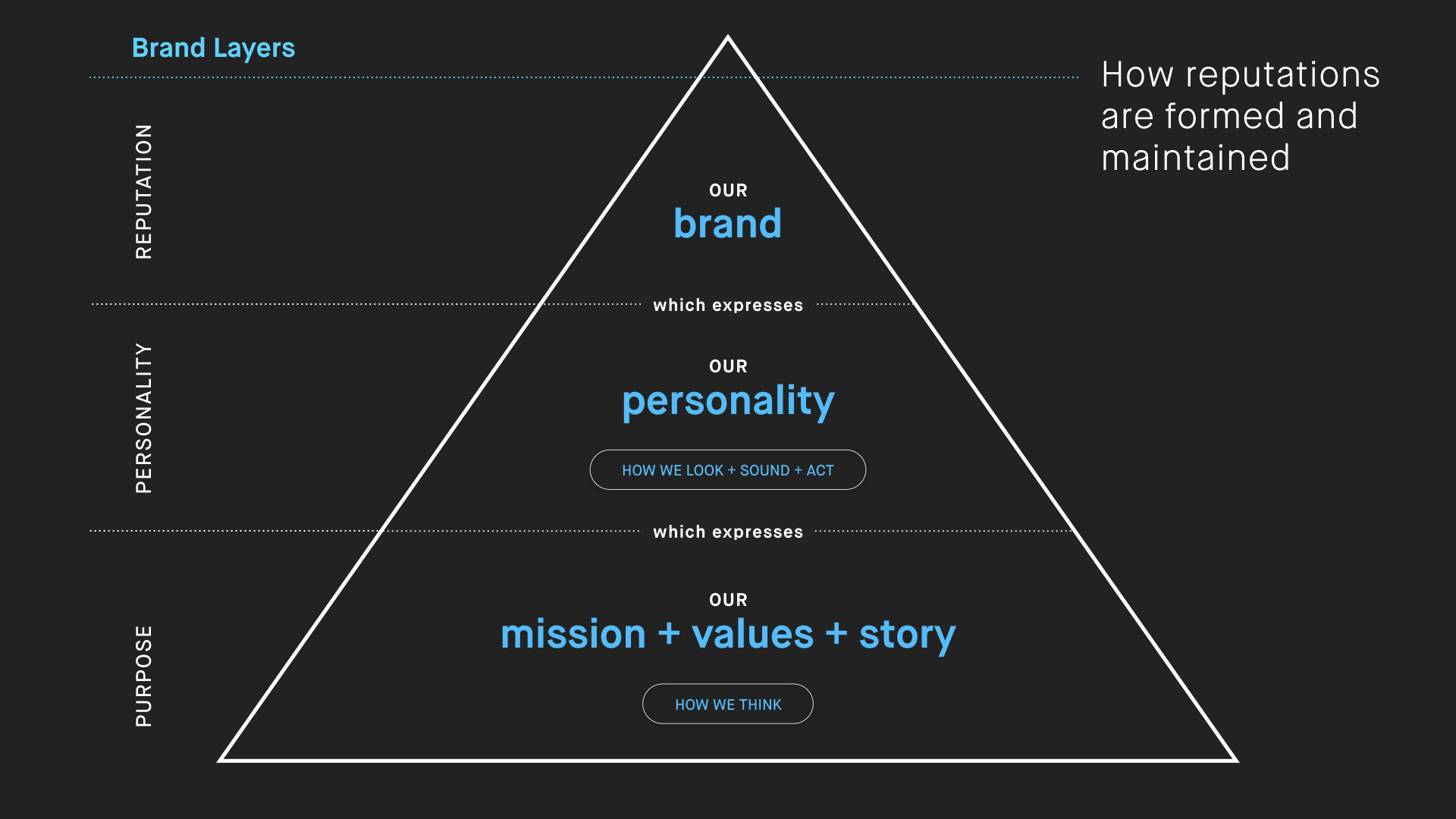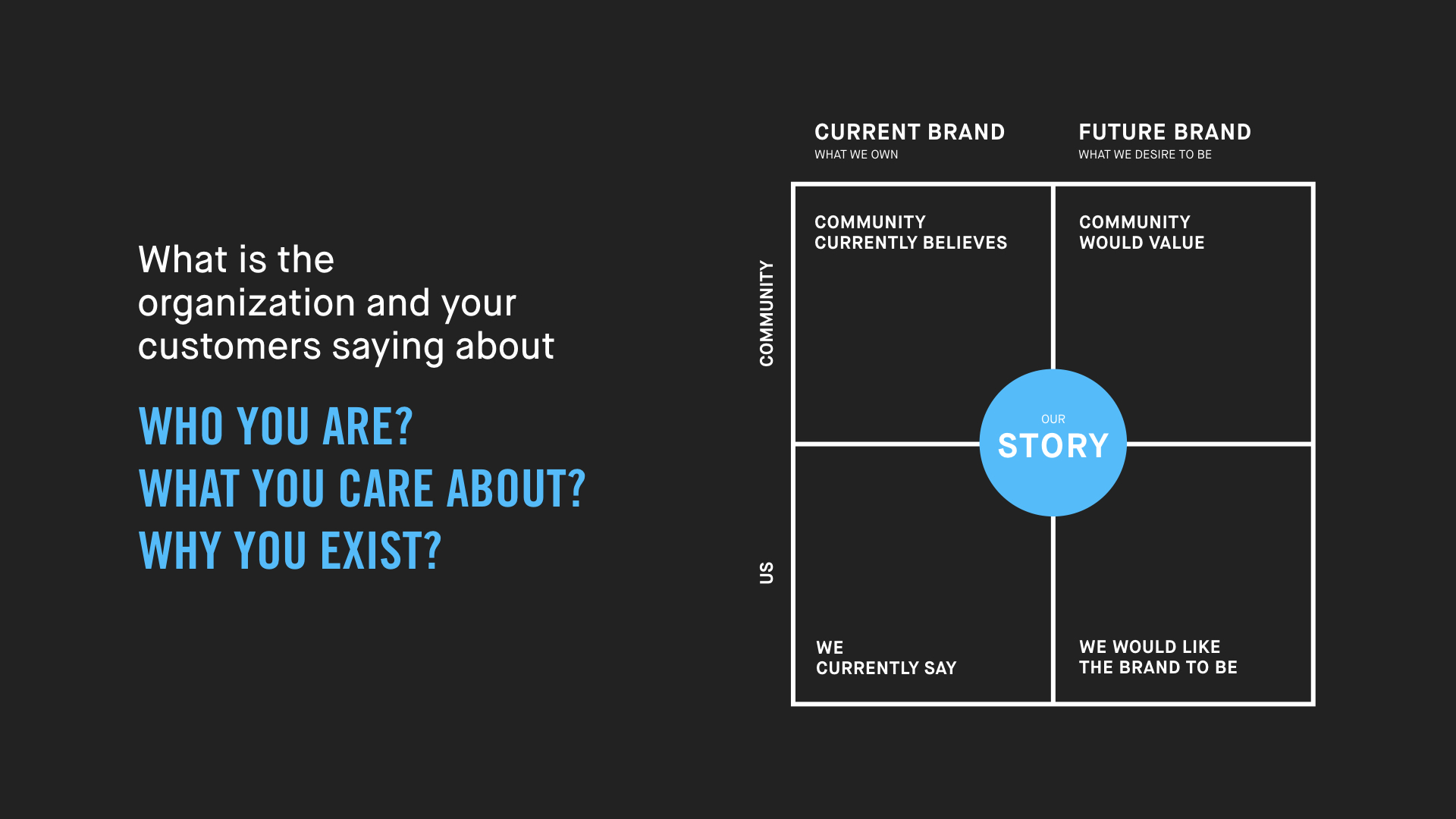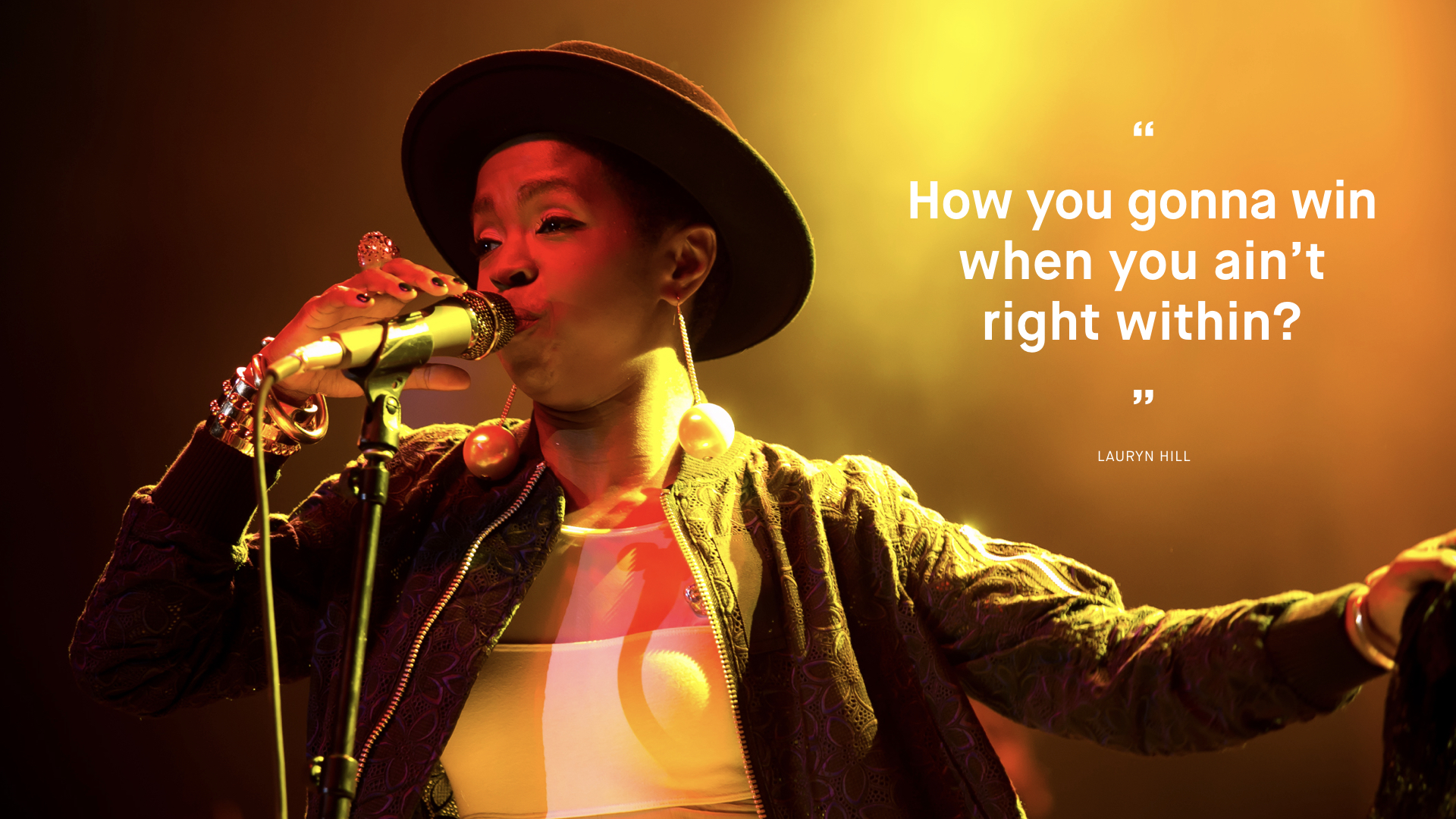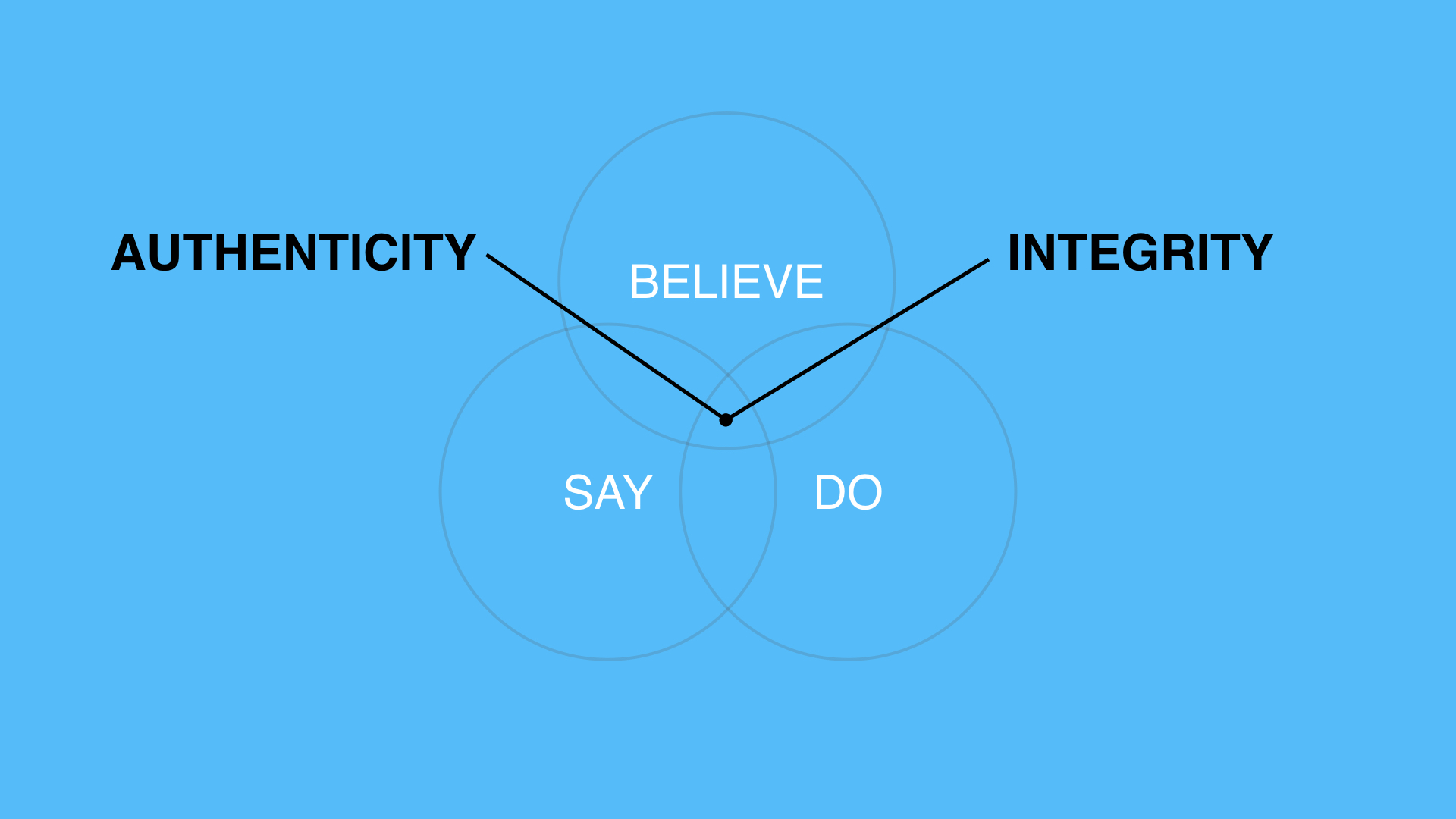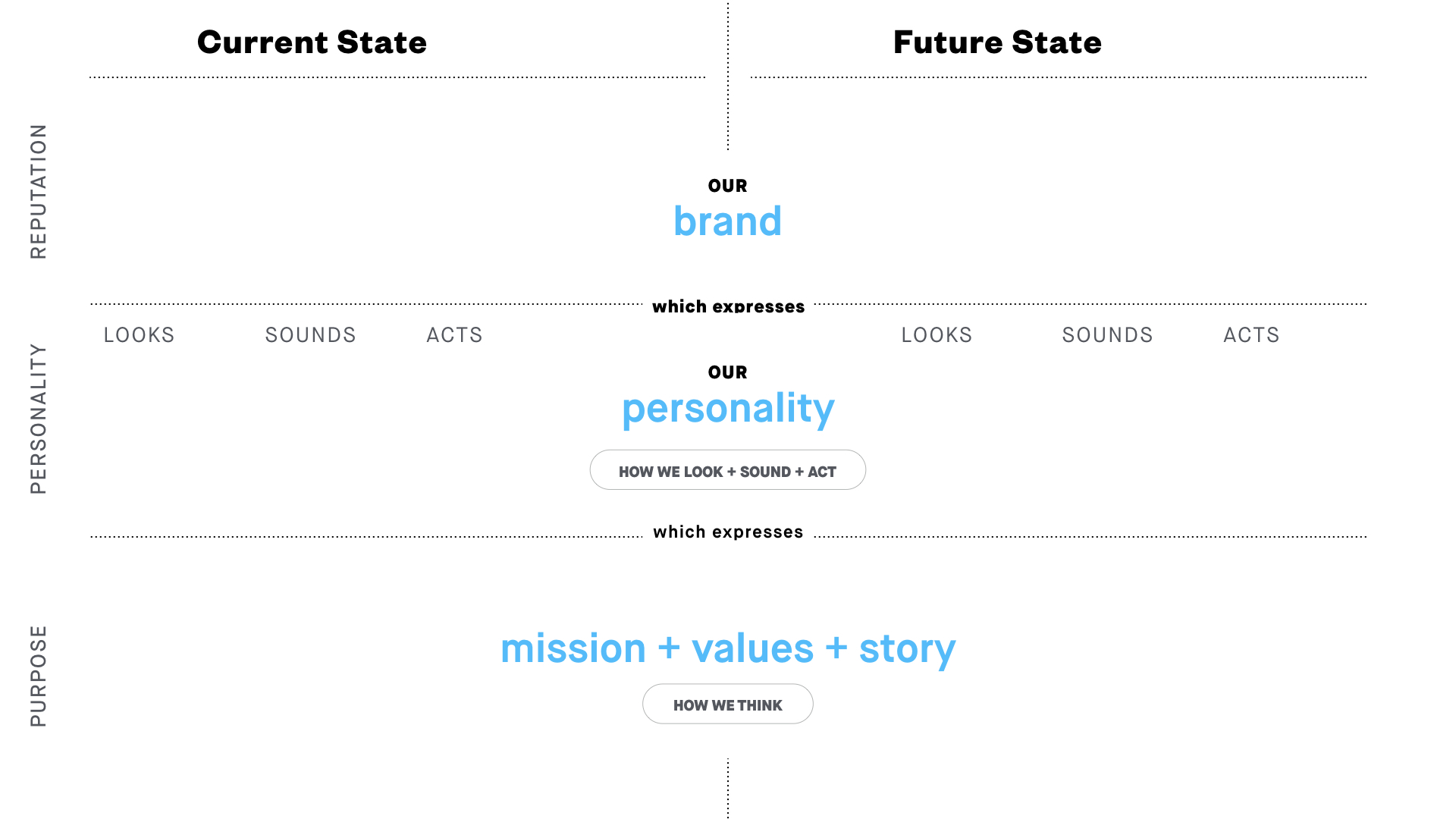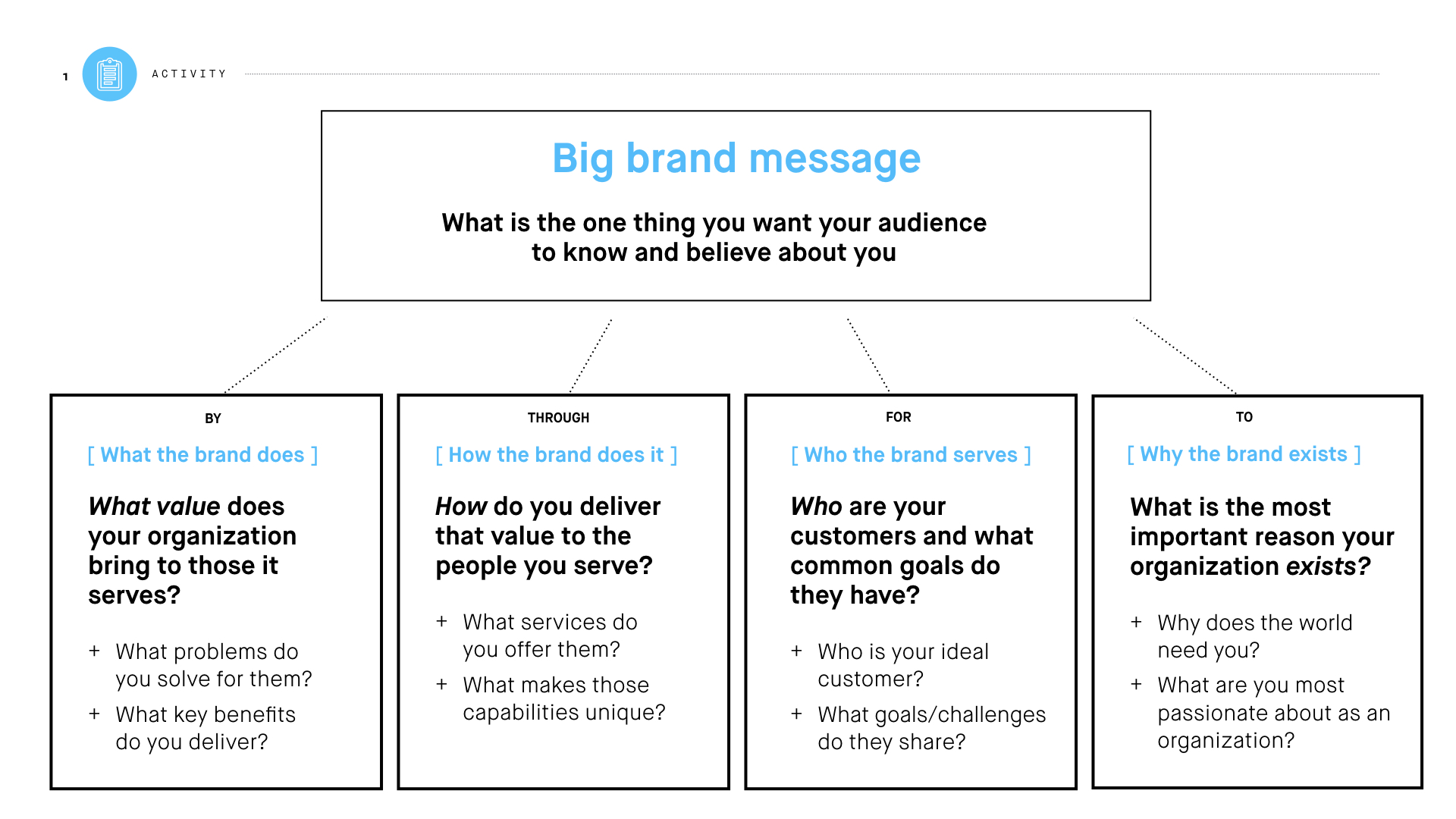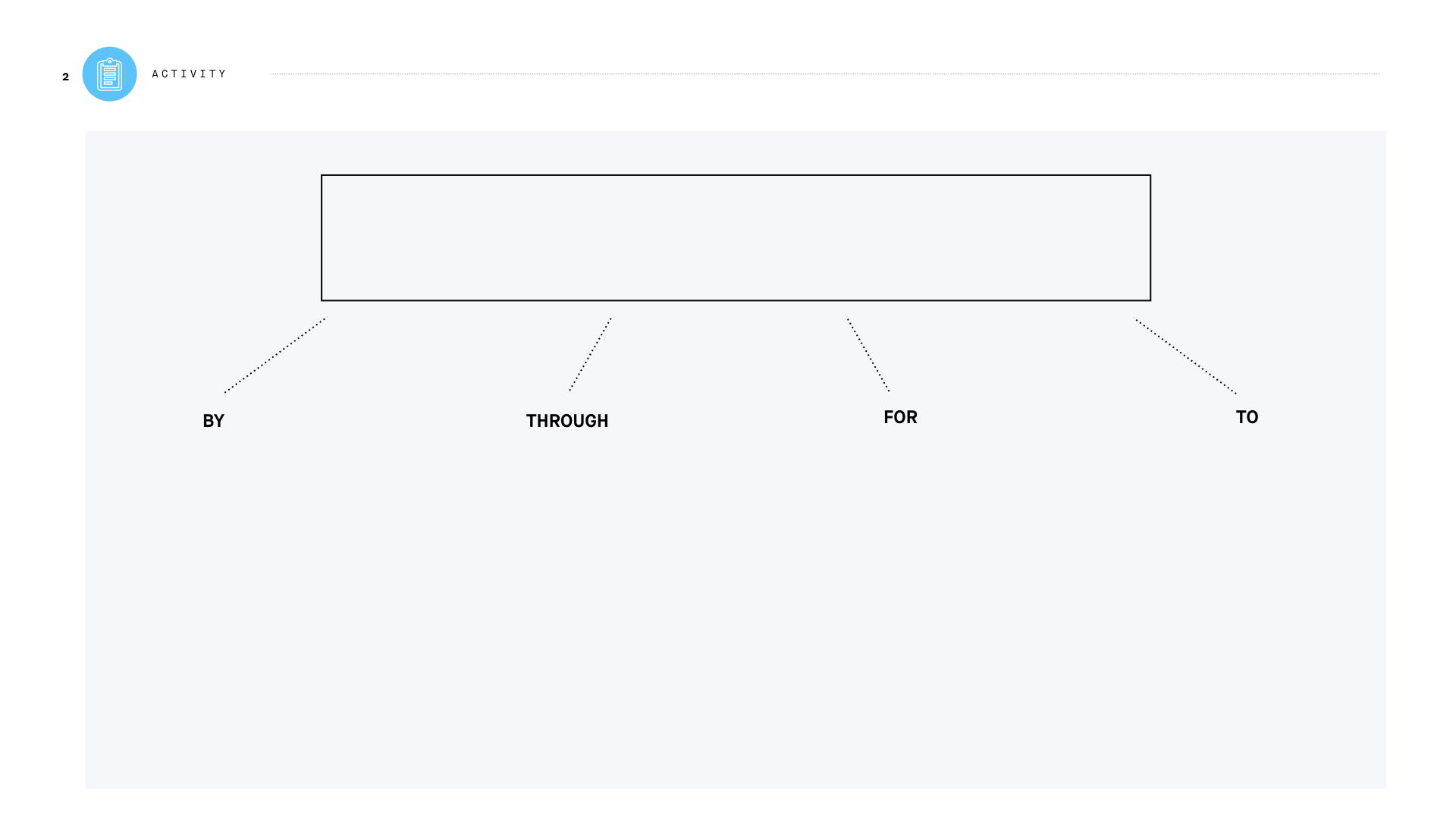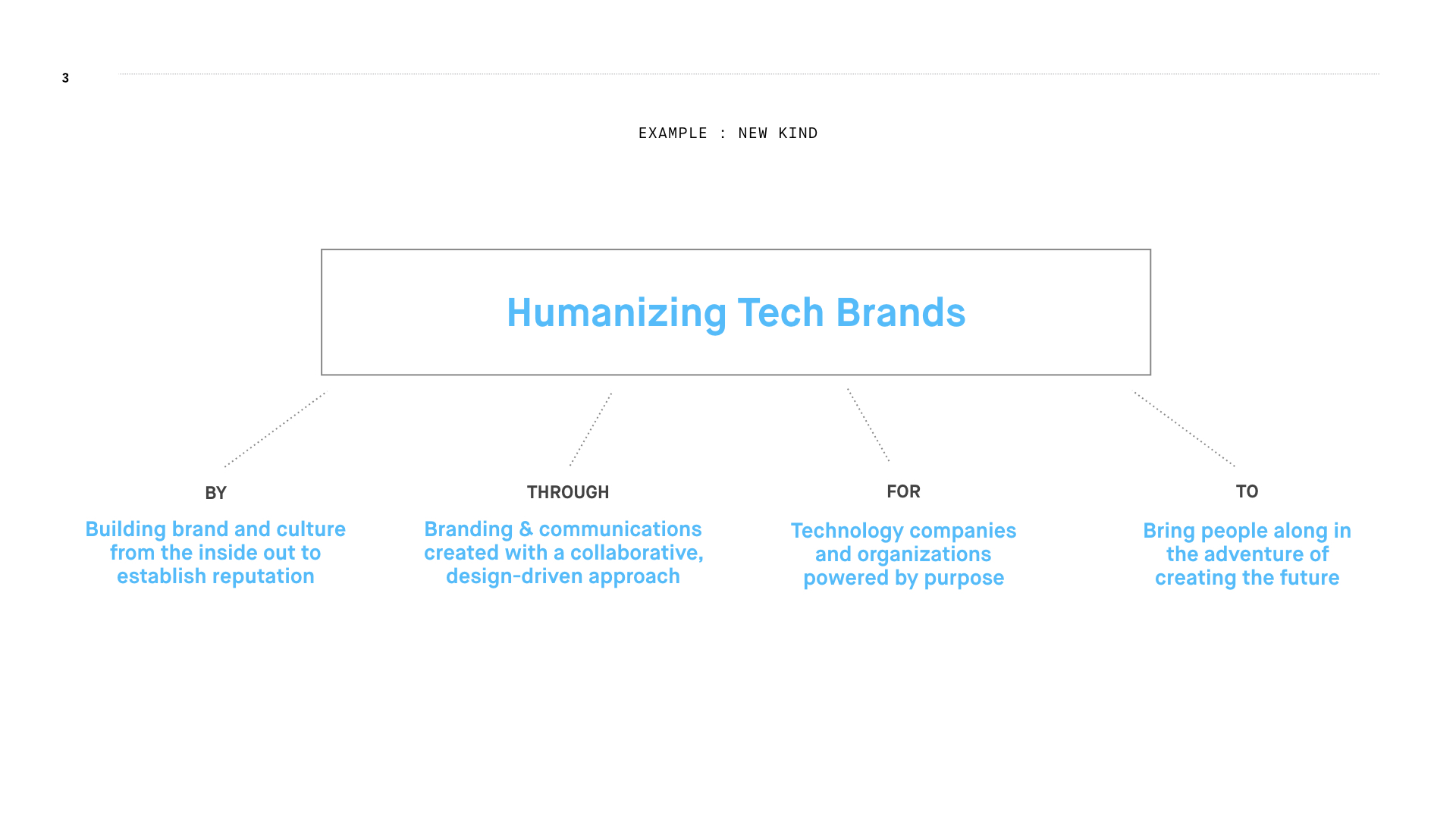Brand Layers: A Simple Step-by-Step Guide to Build an Authentic Brand
Your brand is your reputation. Part of what makes you you, but not something you can directly control.
You certainly own your identity and the way you express yourself through your personality: your internal strengths, stories, and values shape how you present yourself to the world.
But you can’t control what others think of you.
The same is true for your organization’s brand. Because brand is reputation—formed and shaped over time in the minds of customers.
As a business leader, you shape the elements of your organization’s brand: your mission, vision, values, and story—and how they’re expressed publicly.
From that point forward, your customers form their own opinions. They continue to do the work of building your reputation in ways you can’t control—on Twitter, in forums, in product reviews.
With so much of your brand in your customers’ hands, building a brand that creates trust will help you stand out. Every company has the choice to walk their talk—or not. Cautionary tales like the BP oil spill or the VW “diesel dupe” show how important it is to align your purpose, your personality, and your actions. The strongest, most trustworthy brands create a unified experience over time and across platforms—in every interaction.
The strongest, most trustworthy brands create a unified experience over time and across platforms—in every interaction.
The reality is that your customers have choices. You have competition. And not just from other companies in your industry. Your customers are constantly bombarded with brand messages and experiences that compete for their attention. Organizations have the opportunity to reach their customers through a range of platforms—from an airport billboard to their Facebook feed. While they’re listening to Spotify or watching the game. So how can you create a brand that stands out consistently across all of them?
New Kind has developed methods and frameworks to help our clients align their authentic identity to their brand expression. We help shape brand strategies and stories that clearly communicate purpose so our clients can reach their next level of growth.
One framework we return to again and again is what we call the Brand Layers. It’s a way to visualize everything that goes into your brand in a simple, logical way so you can:
- Clearly express why your organization exists, and what makes you different
- Align brand personality with what’s most important to your organization
- Build brand equity among your target audience
- Position your organization for growth
The Brand Layers
The foundation layer: your purpose
How you think : mission + values + story
In a world that’s constantly changing, what about your organization has always been true?
The foundation for an authentic brand is a clear purpose. This is your why, beyond simply making a profit. This layer of the Brand Layers shouldn’t change often. It is the fundamental ideology that will drive all of your business and marketing decisions. Those ideas are often captured in what we call a brand story.
Having a compelling story that resonates with both employees and customers is the basis for building a lasting brand and engaged community. Crafting that story starts with research—to uncover what internal and external brand stakeholders currently believe about the brand, as well as what they desire from the brand in the future. By exploring the brand from each of these perspectives, you can build a narrative that is grounded in who the organization is today, while still pushing into the future.
A brand story document can be a crucial resource that captures your mission, vision, values, and company purpose within the larger market landscape. All tied together with the thread of a compelling narrative, and based on your organization’s differentiators—the things that make you different from your competitors that are also desirable to customers and deliverable by the brand.
Having a compelling story that resonates with both employees and customers is the basis for building a lasting brand and engaged community.
The best stories become guides for strategic business decisions and marketing efforts. They’re simple. They’re easy to remember and tell. And they give voice to both employee and customer values.
Your team’s marketing efforts will feel stronger and more cohesive when they flow from a deep understanding of why your company exists. Campaigns make a bigger impact when they sell your company’s products and services by connecting with customers’ human needs.
On the other hand, marketing without taking your brand’s foundational layer into account sets up your marketing efforts for failure. It’s like putting a new coat of paint on a house without a strong foundation. The new paint job will look good for a year or two, but it won’t give you anything deeper to work with for your marketing strategy. Brand starts bone deep—with the most authentic reason your company exists in the first place. Anything less and it’s just a new coat of paint.
Campaigns make a bigger impact when they sell your company’s products and services by connecting with customers’ human needs.
If you need to get clear about your mission, here’s a great place to start. If you can complete this simple formula, you’re on the right track.
We do [role]
for [people we serve]
to [result].
The middle layer: your personality
How you look, sound, and act
Once you’ve defined your brand story, your personality can bring it to life.
Much like the personality of a person, your brand personality is the outward expression of who you are—through a logo, colors, and typefaces; through what you say, and how you say it; through the public decisions you make. All the elements of your personality break down into three categories: how you look, sound, and act.
Look
As twentieth-century design icon Saul Bass once said, “Logos are a graphic extension of the internal realities of a company.”
Of course, how you look as a brand is much bigger than your logo. In fact, the strongest, most memorable brands develop a complete, cohesive visual system that permeates the entire brand—and stems from the identity of the companies they represent.
Visual consistency and alignment throughout all brand touch points help build experiences that can be much more resonant than words alone. Think of classic brands like Nike and Apple. They have touched people at deep levels of value through good design and consistent branding
Your visual identity (including logo, colors, typestyles, photography styles, patterns, etc.) is the visual language that expresses what’s most core to your brand. Visuals give you an opportunity to communicate what you stand for very quickly.
But how do you ensure disparate visual pieces stay aligned across multiple platforms?
One method is to create a Visual Organizing Principle: an internal, dynamic concept that defines and expresses your visual strategy. This 3-5 word statement is an extension of your brand story, drawing language that inspires a clear visual direction and brings your brand to life everywhere it lives.
Sound
How you sound is often known as your brand voice. It’s the tone you use when you communicate: from homepage headlines to 404 error messages, from email subject lines to form submission confirmation messages.
Similar to your visual style, your tone grows naturally from your brand story layer. For example, if your mission is to “empower developers to build without boundaries,” your tone probably won’t be cynical and snarky. But it won’t be sweet and flowery, either. (Because we are talking to developers, right?)
When honing your voice, choose 2-4 personality traits that can guide your writing. Identify traits that align with and support your mission, vision, and values. You might even choose a famous or fictional character to serve as a “spokesperson” for your brand, so that when you’re writing you can hear that person or character’s voice in your head. (Yes, you can choose Morgan Freeman, but only if his voice actually aligns with your brand!)
For an example of a clear brand voice guide, check out Mailchimp’s content style guide.
Act
Your organization’s look and sound are what many people think of as ‘branding,’ but how you act as a company is just as important.
To create a lasting brand, all three elements of your personality must be in alignment. Just think about the power of branding from this standpoint. The process of creating a brand can be one of the most powerful exercises your company goes through. Because if you do it right, you must examine how your company values govern behavior. And you must determine whether your company, and everyone within it, can practice what you preach.
This is where brand and culture collide. Does your company have a culture that supports the vision you’re working to achieve? Do the individuals who make up your organization believe in your goal? Do their individual actions further your mission?
Having a solid Employer Value Proposition that builds on your brand story clarifies how your brand and culture support each other. When all employees understand and live your brand ideals, you’ll not only continue to attract the internal talent that fits. You’ll also attract customers who want to work with your people.
The top layer: your brand
The reputation you build with the help of your customers and stakeholders
Ultimately, crafting a brand is all about integrity and authenticity.
Your unique perspective and your personality are the elements of your brand you can control. The rest is up to your customers. So you must show up clearly and consistently. Share your story passionately. And do what you say you’re going to.
Shaping an authentic brand takes time. And it takes investment from your entire team. Because it’s deep work. But it’s worth it if you want to build a company that stands for something—and one that lasts.
Get started
We always recommend a collaborative approach for creating a brand or going through a rebrand.
Learn more about how we do it here. And as always, if you have a brand project you’d like to discuss or have any questions about using this Brand Layers framework—give us a shout. We’d love to help.
In the meantime, here are a few exercises to get you started. To create alignment among your team members, try these exercises together.
Exercise 1: Current State / Future State
Have everyone on your leadership team fill out each brand layer in the worksheet. Your mission + values + story might be the same in its current and future state, or it may need to change.
Then describe how your brand looks, sounds, and acts today—and how you’d like these elements to evolve in the future.
Finally, define what you think your reputation is today, plus your ideal future state for your brand.
Compile everyone’s responses and look for themes and commonalities. Distill the results until you have just a word or two in each portion of the worksheet. Then use what you find to craft your brand guidelines.
Exercise 2: Brand narrative
Fill in each box of your worksheet with the corresponding information. We recommend starting with the “By,” “Through,” “For,” “To,” statements first, and then taking a shot at the Big Brand Message.
At its best, The Big Brand Message is meant to be the highest-level distillation of your brand. It’s the one phrase that you want your customers to know and remember about you. Try to make it no more than 3-5 words. Don’t worry if you don’t arrive at the answer in your first round of ideation. Take your time, and keep iterating until it feels right.

